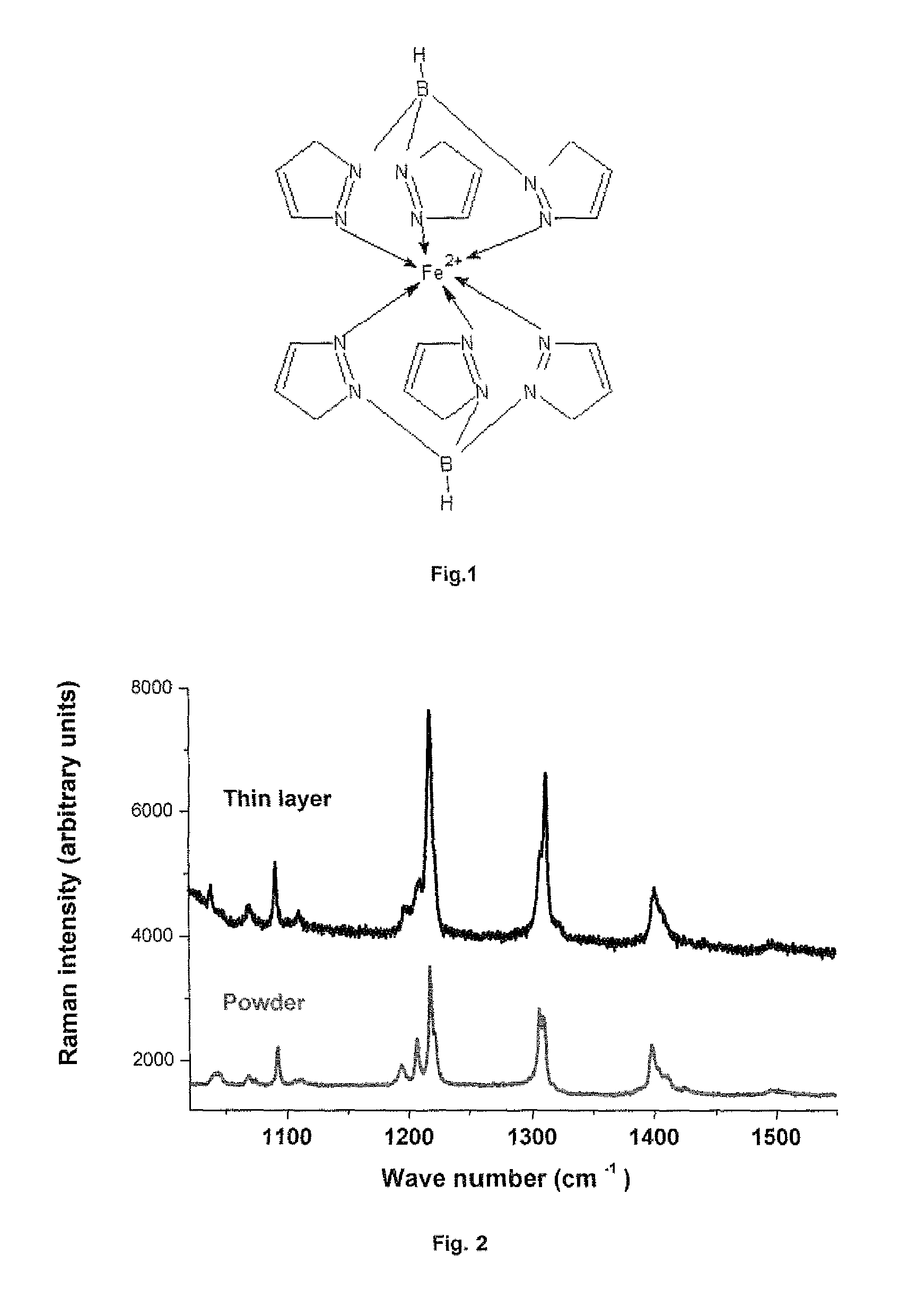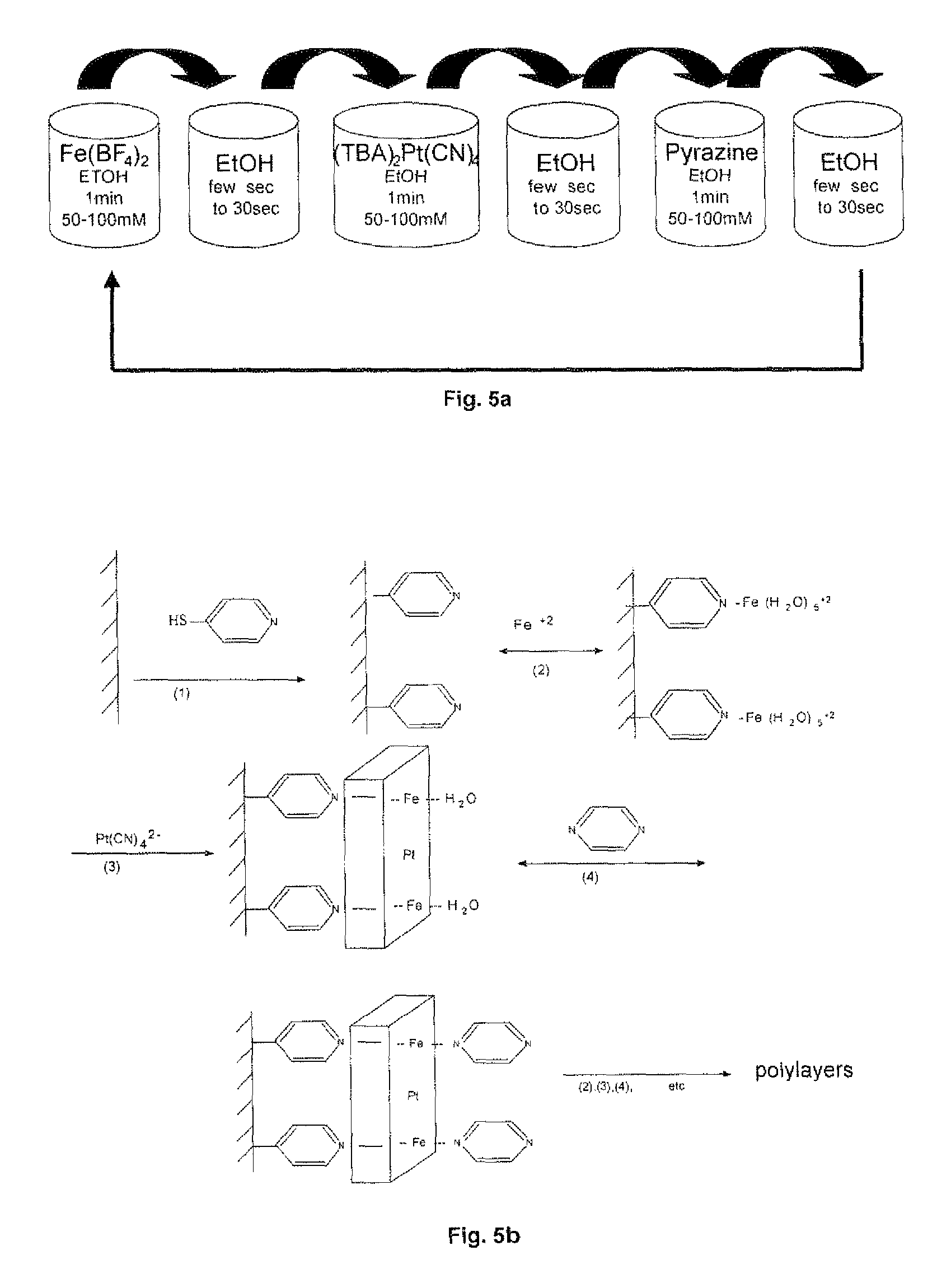Process for the application of spin transition molecular materials in thin layers
a technology of transition molecular materials and thin layers, applied in nanoinformatics, instruments, record information storage, etc., can solve the problems of insufficient application for most applications, only producing two-dimensional monolayers, and incompatibility between products
- Summary
- Abstract
- Description
- Claims
- Application Information
AI Technical Summary
Benefits of technology
Problems solved by technology
Method used
Image
Examples
Embodiment Construction
[0078]The following examples are provided by way of representation and without restricting this invention.
1. Example of the Layer-by-Layer Process.
[0079]The work of layer-by-layer deposition was carried out as follows. The substrate was based on monocrystalline silicon coated with a layer of titanium (2 nm) and gold (15 nm). It should be noted that this metallised surface substrate may also be replaced by oxidised surface substrates (for example SiO2). The substrate was then coated with a monolayer of cystamine (or other thiols such as 4-mercaptopyridine) by immersing it in a solution of cystamine / ethanol (1-10 mM) overnight. The Fe(pz)[Pt(CN)4] complex was then deposited at −60° C. (CO2 / acetone bath) by successively immersing the substrate (coated with the binding layer) in (1) a solution of 50 mM-100 mM of Fe(BF4)2 in ethanol, (2) in a solution of 50 mM-100 mM of (TBA)2[Pt(CN)4] in ethanol and (3) a solution of 50 mM-100 mM of pyrazine in ethanol. The substrate was rinsed in pure ...
PUM
| Property | Measurement | Unit |
|---|---|---|
| thickness | aaaaa | aaaaa |
| thickness | aaaaa | aaaaa |
| temperature | aaaaa | aaaaa |
Abstract
Description
Claims
Application Information
 Login to View More
Login to View More - R&D
- Intellectual Property
- Life Sciences
- Materials
- Tech Scout
- Unparalleled Data Quality
- Higher Quality Content
- 60% Fewer Hallucinations
Browse by: Latest US Patents, China's latest patents, Technical Efficacy Thesaurus, Application Domain, Technology Topic, Popular Technical Reports.
© 2025 PatSnap. All rights reserved.Legal|Privacy policy|Modern Slavery Act Transparency Statement|Sitemap|About US| Contact US: help@patsnap.com



